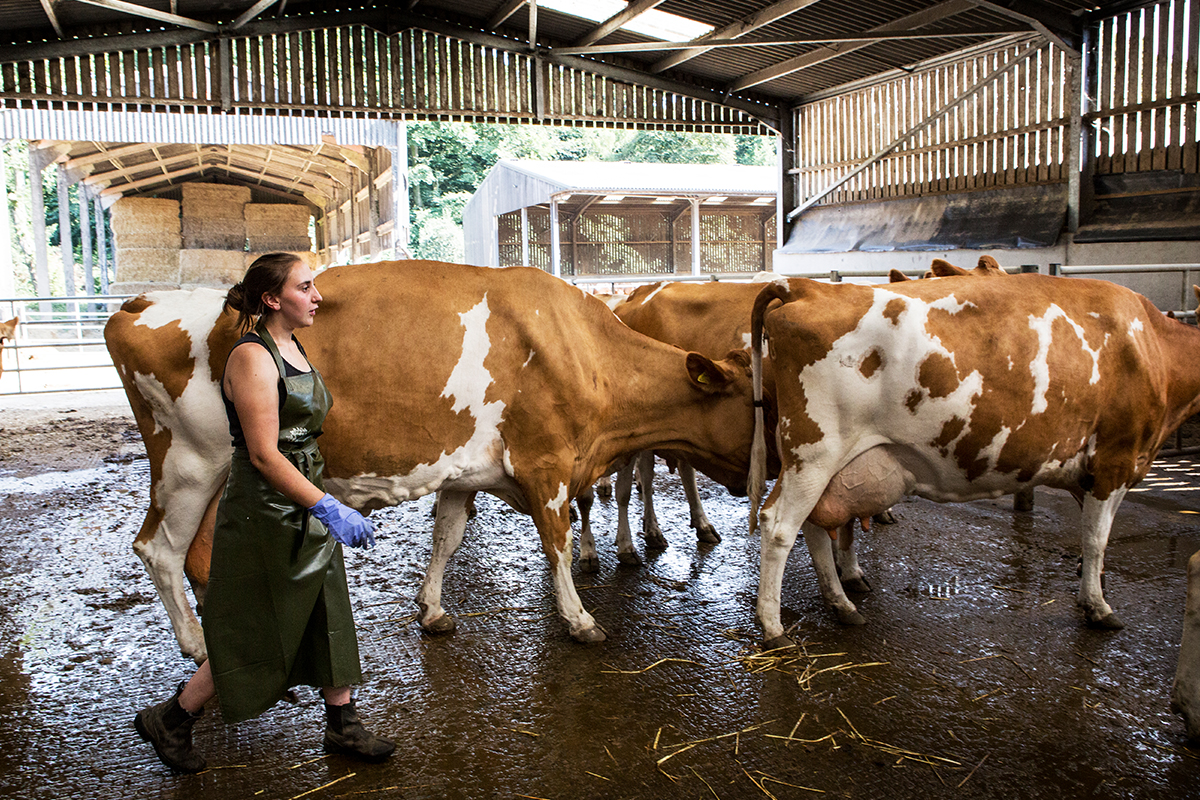Last Updated on May 15, 2024 by Admin
Dairy farming is an essential part of agriculture that includes raising animals, primarily cows and buffaloes, to make milk. After the milk is collected, it is turned into cheese, yoghurt, butter, and other dairy goods. This field has been traditionally popular due to the continuous demand for milk products and presents a stable business opportunity across the globe, including India. This guide aims to give beginners essential insights on initiating a dairy farm.
What is Dairy Farming?
What is dairy farming? It encompasses the management of dairy animals, primarily cows and buffaloes, for milk production. This agricultural practice is about milking and includes breeding, health care, and proper animal housing and nutrition to ensure maximum milk production and quality.
What are Different Types of Dairy Farming
Understanding the types of dairy farming is crucial for any prospective dairy farmer.
- Cow Dairy Farming: This is the most common form in many countries, including India and the United States, where breeds like Holstein, Jersey, and Sahiwal are popular.
- Buffalo Dairy Farming: Particularly prevalent in South Asia, buffalo dairy farming is favoured because the milk’s rich fat content is ideal for producing traditional dairy products like ghee and curd.
- Mixed Dairy Farming: This involves keeping both cows and buffaloes, which can be beneficial in diversifying the dairy products offered.
How is Dairy Farming Practised?
Practical strategies on how to start dairy farming involve a combination of well-planned infrastructure, efficient feeding protocols, rigorous health management, and advanced milking techniques. Here is a deeper look into these essential practices that form the backbone of a thriving dairy farming operation.
- Infrastructure
Proper infrastructure is not just a necessity but a foundation for the health and productivity of dairy animals. Shelters must be designed to protect animals from extreme weather conditions while ensuring adequate ventilation and sunlight. Additionally, ample space should be allocated for feeding, resting, and milking. Efficient waste management systems are also crucial to maintaining hygiene and controlling diseases.
- Feeding
The nutritional management of dairy cattle plays a critical role in the success of what is dairy farming. A balanced diet ensures that animals meet their health and production potential. This diet includes a combination of fodder, silage, and specially formulated feeds that provide a balanced intake of carbohydrates, proteins, fats, vitamins, and minerals. Regular access to clean water is equally essential to maintain hydration and aid in metabolic processes.
- Health Management
Maintaining the health of the dairy herd is paramount. It involves regular veterinary check-ups, vaccinations, and deworming programs to prevent diseases and infections. Early diagnosis and treatment of illnesses are critical to prevent outbreaks and ensure the herd maintains optimal productivity. Additionally, good practices such as regular hoof trimming and teat cleaning before and after milking improve overall animal welfare and milk quality.
- Milking Techniques
Employing modern milking techniques can significantly enhance milk yield and quality. It includes automated milking systems that ensure consistency and reduce physical stress on the animals. Maintaining strict hygiene during milking is crucial to prevent the transmission of pathogens and ensure the production of high-quality milk. Proper training of staff in milking procedures and machine handling is also essential to optimize the milking process and animal handling.
Pros of Dairy Farming in India
The advantage of dairy farming in India is substantial, supported by a vast and growing consumer market for milk and dairy products. India’s climatic conditions and agricultural orientation also offer a conducive environment for dairy farming.
Government policies and subsidies designed to promote the dairy sector include support for infrastructure development, financial incentives for new farmers, and subsidies on veterinary services and feed. This governmental backing helps reduce the entry barriers for new entrants in the market, making how to start dairy farming more accessible to a broader demographic. Additionally, the increasing trend towards health-conscious diets has boosted the demand for milk and organic dairy products, providing further growth opportunities for dairy farmers in India.
By addressing these areas diligently, anyone looking into how to start dairy farming can set up a sustainable and profitable dairy business. Proper implementation of these practices ensures not only the well-being of the livestock but also optimizes production and secures a significant return on investment.
Challenges in Dairy Farming
Despite the benefits, there are several challenges in how to start dairy farming:
- Capital Investment
Starting a dairy farm requires significant capital investment. Costs include acquiring land, purchasing livestock, installing proper infrastructure, and buying necessary equipment. This high initial expenditure can be a barrier for new entrants into the types of dairy farming.
- Labor Intensity
Dairy farming is labour-intensive, demanding considerable daily effort for feeding, milking, and cleaning. Managing a large workforce and ensuring they are skilled in dairy farm operations adds complexity and cost.
- Market Fluctuations
Milk prices and its products are subject to market and environmental factors, leading to potential volatility in earnings. Farmers need to navigate these fluctuations to maintain profitability.
- Regulatory Challenges
Farmers must follow strict rules about how to care for animals, ensure milk safety, and protect the environment. These rules can add to costs and require constant attention from management.
- Disease Management
Maintaining animal health and preventing diseases is crucial. Disease outbreaks can lead to significant production losses and high veterinary costs, impacting farm viability.
These challenges underscore the complexity of what is dairy farming and necessitate careful planning and strategic management to overcome them and harness the advantage of dairy farming.
Expanding Health Awareness and its Impact on Dairy Consumption in India
The Indian dairy industry is experiencing a significant shift due to the growing health consciousness among consumers. This trend drives the demand for essential nutrients in dairy products, such as proteins, vitamins, and minerals. Consumers increasingly opt for value-added dairy items like flavoured yoghurts, fortified milk, and probiotic drinks, moving beyond traditional dairy offerings. Dairy companies are capitalizing on this movement by introducing a range of health-focused products, tapping into the consumers’ desire for wellness through their diet. This shift underscores the advantage of dairy farming as it adapts to meet changing consumer preferences.
Also Read: “Understanding the Dynamics of Food Technology”
Dairy farming demands a considerable investment of both money and effort. Proper training in animal care, milking techniques, and effective farm management is essential. Patience plays a critical role as well; it takes time for a farm to establish itself and become profitable. By mastering how to start dairy farming and understanding the types of dairy farming, you can create a sustainable and rewarding business. With dedication and the right strategies, the advantage of dairy farming can be fully realised, offering long-term success in this challenging yet fulfilling industry.













